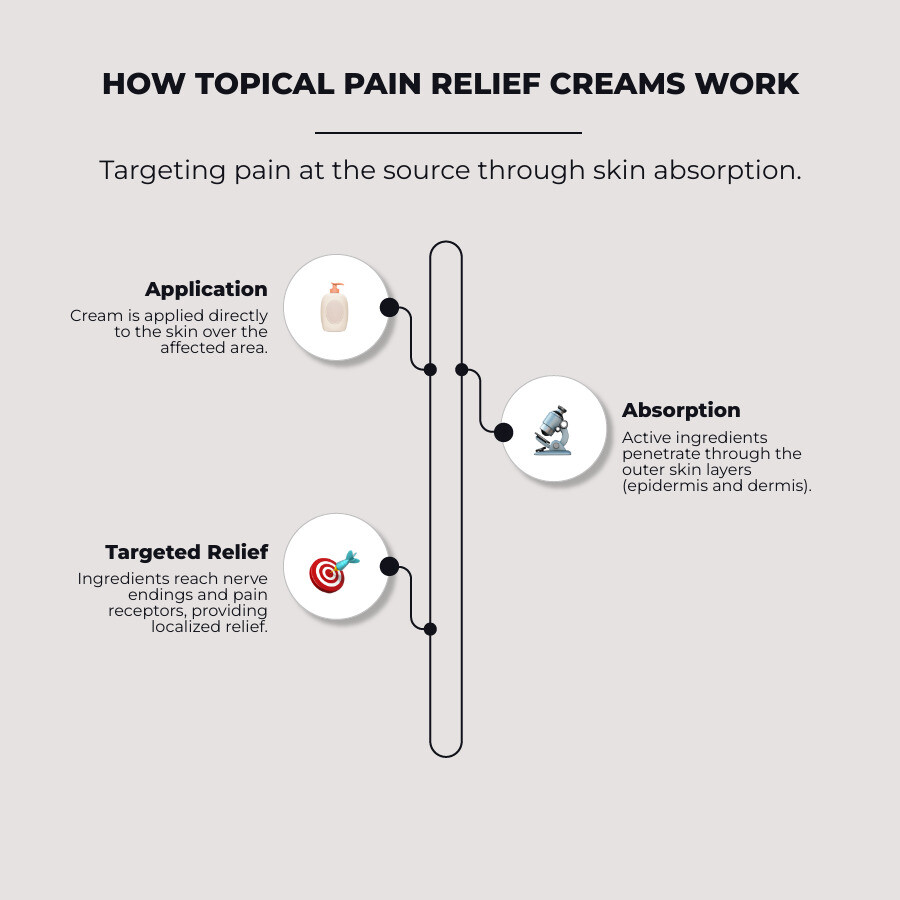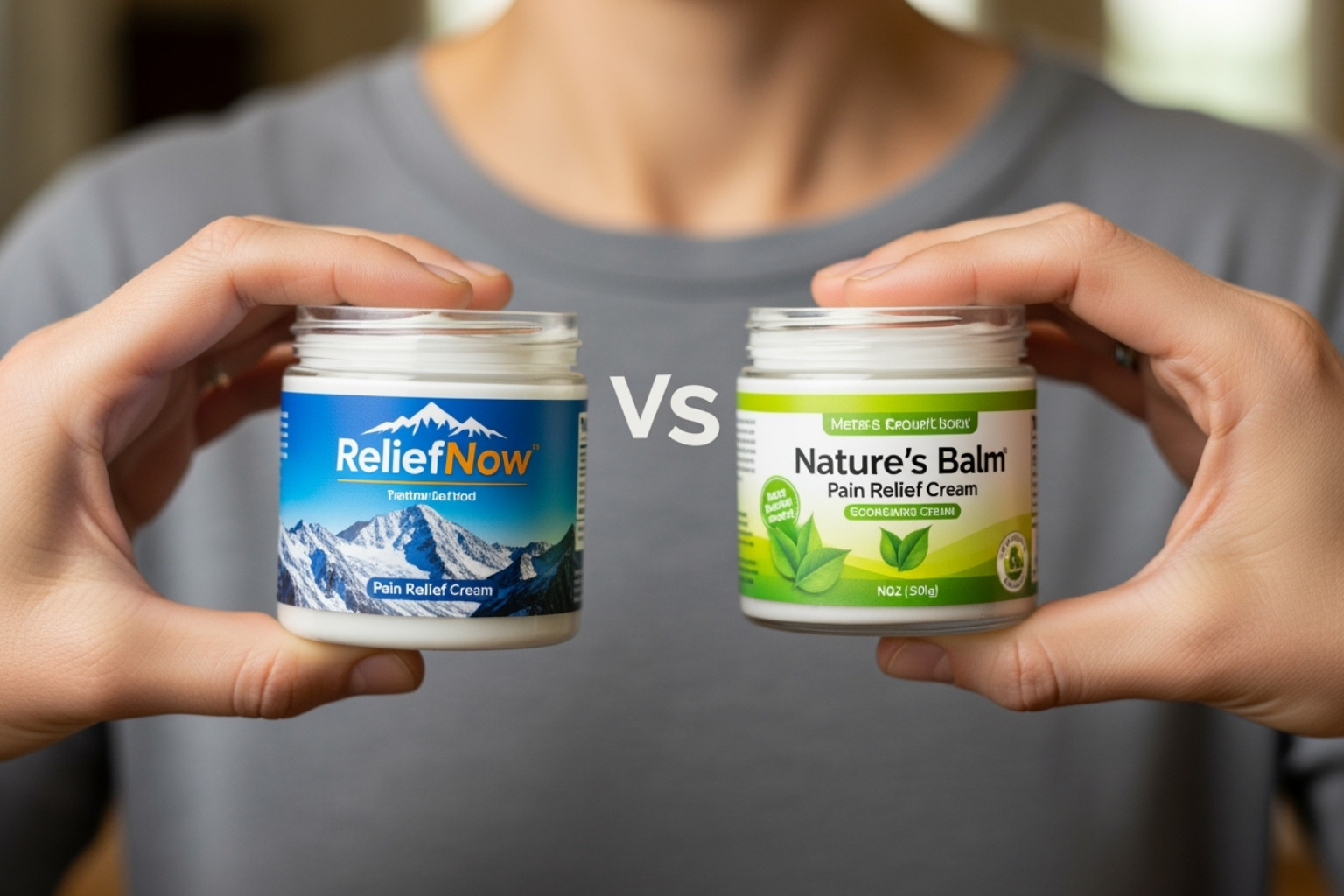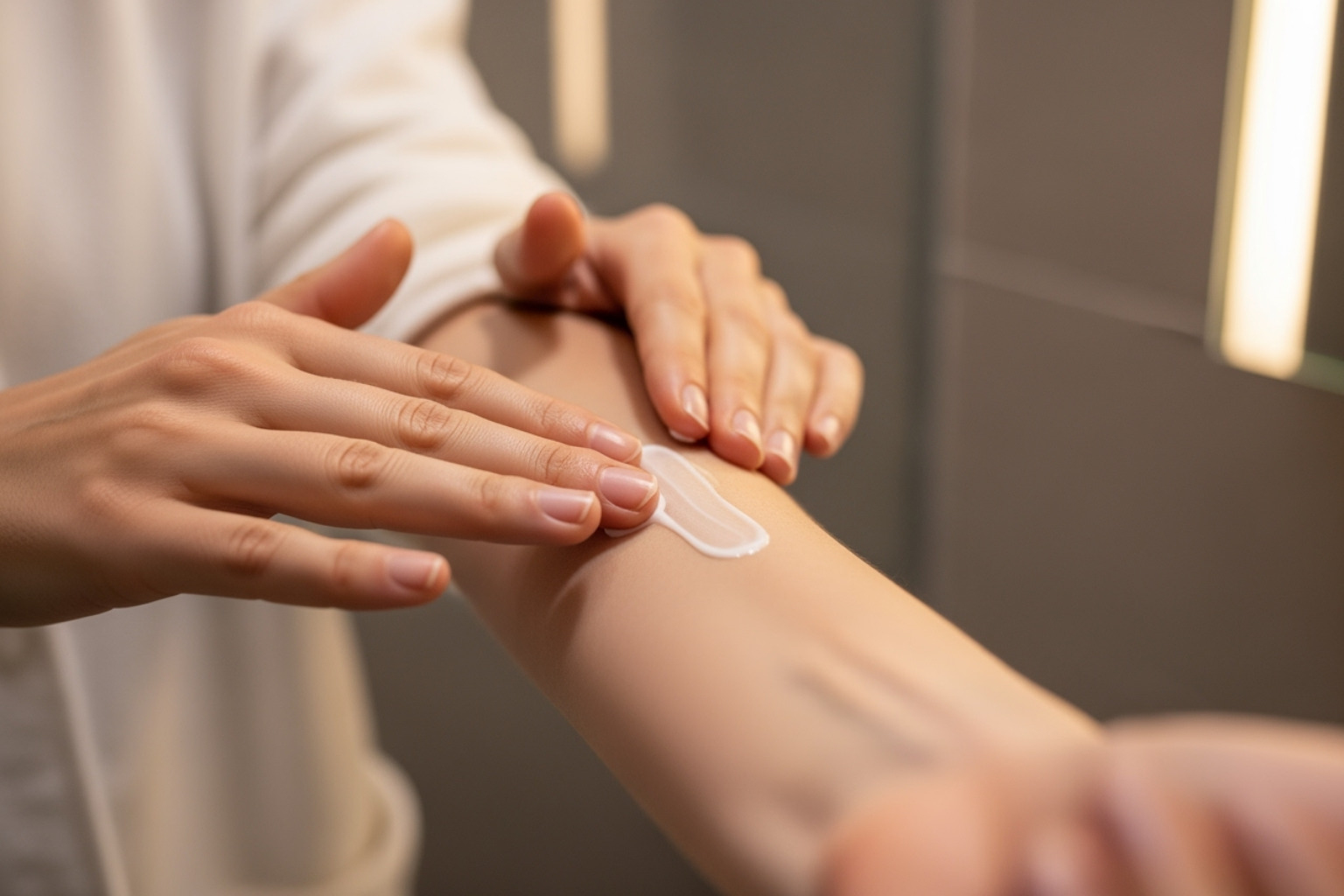Why the Right Cream for Pain Relief Matters
Cream for pain relief is a topical treatment that soothes aches by delivering active ingredients through the skin directly to the affected area. These creams are an alternative to oral medications, offering fast, localized relief with fewer systemic side effects.
Quick Answer: The Best Cream for Pain Relief Depends on Your Pain Type
| Pain Type | Best Active Ingredient | How It Works | Top Pick |
|---|---|---|---|
| Arthritis & Joint Pain | NSAIDs (Diclofenac) | Blocks inflammation at the source | Voltaren Arthritis Pain Gel |
| Muscle Soreness | Menthol | Creates cooling sensation to distract from pain | Biofreeze Roll-On |
| Nerve Pain | Lidocaine or Capsaicin | Numbs nerves or depletes pain signals | Aspercreme with Lidocaine |
| General Aches | Combination (Menthol + Aloe) | Multi-action relief with soothing properties | Neuropasil Nerve Pain Relief Cream |
Whether you're an athlete with post-workout soreness, managing chronic arthritis, or experiencing nerve pain, the right topical cream can make a significant difference. The beauty of topical pain relief is its targeted action. Unlike oral medications that affect your entire body, creams work directly where you apply them. This means a lower risk of stomach upset and cardiovascular issues compared to oral NSAIDs, a benefit highlighted by health authorities like the Mayo Clinic, making them an attractive option for pain management.
I'm Tony Enrico, and through my work with Neuropasil, I've seen how the right cream for pain relief can transform someone's quality of life. Our mission is to provide fast-acting, natural relief using ingredients like menthol, aloe, and urea to help people manage nerve and muscle pain effectively.

Must-know cream for pain relief terms:
How Topical Pain Relief Creams Work
When you apply a topical analgesic (a cream for pain relief), its active ingredients penetrate the outer layers of your skin to reach the underlying tissues, muscles, or nerves where the pain originates. This process, called skin absorption, allows for effective, localized action.
Instead of taking a pill that must travel through your digestive system and bloodstream, you're delivering medicine directly to the source. This targeted approach is why many are switching from oral medications to topical creams.
Benefits of Topical Creams vs. Oral Medication
- Targeted Application: The cream is applied exactly where it hurts, concentrating the medication for efficient relief.
- Lower Risk of Stomach Upset: By bypassing the digestive system, topical creams avoid the heartburn and nausea that can accompany oral pain relievers.
- Reduced Systemic Exposure: Because the medication doesn't circulate throughout your body in high concentrations, there's less risk of drug interactions and organ strain. The Mayo Clinic notes that topical NSAIDs have a lower risk of cardiovascular problems compared to oral versions.
- Fast-Acting Relief: For pain near the skin's surface, a topical cream can start working within minutes, much faster than waiting for a pill to take effect.
For more details, see our Comprehensive Guide to Relief Cream for Pain.
Potential Drawbacks to Consider
While topical creams are a great option, it's important to be aware of their limitations.
- Skin Sensitivity: Some ingredients, especially capsaicin, can cause redness, itching, or a burning sensation. Always perform a patch test on a small area of skin first.
- Not for Deep Internal Pain: Topical creams cannot penetrate deeply enough to treat pain from internal organs or deep tissue injuries.
- Messiness: Creams can be messy and may get on clothing. Always wash your hands thoroughly after application to avoid accidentally touching your eyes or other sensitive areas.
- Interactions with Other Topicals: Layering multiple products can sometimes cause irritation. It's best to consult a healthcare provider if you're using other topical medications.
For a breakdown of different formulations, our guide on Topical Pain Relief Creams, Gels, and Ointments Explained has you covered.
Decoding the Label: Key Active Ingredients in Pain Relief Creams
Understanding the active ingredients in your cream for pain relief is key to finding what works for your specific pain. Each ingredient has a unique mechanism for tackling pain, from cooling the skin to fighting inflammation or numbing nerves.
| Active Ingredient | Pain Type It Addresses Best | Mechanism of Action | Speed of Relief | Potential Side Effects |
|---|---|---|---|---|
| Menthol (Counterirritant) | Muscle soreness, arthritis, general aches | Creates cooling sensation, distracts from pain signals | Fast (minutes) | Skin irritation, strong odor |
| Camphor (Counterirritant) | Muscle soreness, general aches | Creates warming sensation, distracts from pain signals | Fast (minutes) | Skin irritation, strong odor |
| Methyl Salicylate (Counterirritant/Salicylate) | Muscle soreness, joint pain (close to skin) | Creates warming sensation, local analgesic | Fast (minutes) | Skin irritation, aspirin allergy risk |
| NSAIDs (e.g., Diclofenac) | Arthritis, joint pain, muscle strains | Blocks prostaglandins (inflammation-causing chemicals) | Moderate (hours to days) | Skin irritation, lower systemic risk than oral NSAIDs |
| Lidocaine (Anesthetic) | Localized nerve pain, post-shingles pain | Numbs nerve endings, blocks pain signals | Fast (minutes) | Skin irritation, temporary numbness |
| Capsaicin | Nerve pain, arthritis | Depletes Substance P (pain-transmitting chemical) | Slow (days to 2 weeks of consistent use) | Burning/tingling sensation, skin irritation |
Counterirritants: The Cooling & Warming Effect
Counterirritants like menthol, camphor, and methyl salicylate work by creating a strong cooling or warming sensation on the skin. This sensation distracts your brain from the underlying ache, a principle known as the "gate control theory of pain." According to this theory, explained in research from the National Institute of Neurological Disorders and Stroke, the new sensation effectively "closes the gate" on pain signals traveling to the brain. Menthol (from mint) provides a cooling effect, while camphor and methyl salicylate (related to aspirin) create warmth. They are excellent for providing fast relief from muscle soreness and general aches. Learn more in our Menthol Comparison.
NSAIDs: Fighting Pain and Inflammation
For pain accompanied by swelling and inflammation, topical NSAIDs (Nonsteroidal Anti-Inflammatory Drugs) are ideal. The most common is diclofenac (found in Voltaren), which blocks the production of prostaglandins—chemicals that cause pain and inflammation. According to the Mayo Clinic, topical NSAIDs have a lower risk of stomach and heart issues than their oral counterparts. They are highly effective for arthritis in joints like the hands and knees. Explore more in our Anti-Inflammatory Creams guide.
Anesthetics: Numbing the Nerves
For sharp, burning, or electric-shock sensations typical of nerve pain, an anesthetic cream for pain relief is the best choice. Lidocaine is a topical anesthetic that temporarily blocks nerve signals in the area where it's applied, effectively numbing the pain. Found in products like Aspercreme with Lidocaine, it provides fast relief for localized nerve pain, such as from post-shingles discomfort or other neuropathies. It stops the pain message from being sent to the brain. We cover this topic in our article on Nerve Pain.
Capsaicin: The Power of Chili Peppers
Capsaicin, the compound that makes chili peppers hot, offers a unique approach to pain relief. It works by targeting Substance P, a neurotransmitter that sends pain signals to the brain. With repeated use, capsaicin depletes the nerves' supply of Substance P, reducing their ability to transmit pain signals. This makes it very effective for chronic nerve pain and arthritis, but it requires patience. As noted by the Cleveland Clinic, it can take up to two weeks of consistent daily application to feel significant relief. The initial burning sensation is normal and typically lessens over time. Learn more in our guide to Capsaicin Cream Uses & Benefits.
The Best Cream for Pain Relief: A Guide to Choosing & Top Picks

Choosing the best cream for pain relief means finding the one with the right active ingredients for your specific type of pain. Consider the formulation (gel, cream, or roll-on), brand reputation, and user reviews to find your perfect match.
Finding the Right Cream for Your Pain Type
- Arthritis Pain: For joints close to the skin (knees, hands), look for NSAID creams with diclofenac to reduce inflammation. Our guide to Joint Pain Relief Creams can help.
- Muscle Soreness & Strains: Counterirritants like menthol and camphor provide a cooling or warming sensation that distracts from pain, making them ideal for post-workout recovery.
- Backaches: For muscular back pain, NSAID or counterirritant creams work well. If the pain is nerve-related (e.g., sciatica), lidocaine or capsaicin is more appropriate.
- Nerve Pain: For burning, tingling, or shooting pain from conditions like neuropathy or sciatica, you need a specialized approach. Lidocaine numbs the area, while capsaicin reduces pain signals over time. Our Guide to Specialized Nerve Pain Creams offers more insight.
Our Top Picks for the Best Cream for Pain Relief in 2024
Here are our top recommendations based on ingredients, effectiveness, and real-world results.
- Best NSAID Cream: Voltaren Arthritis Pain Gel contains prescription-strength diclofenac to block inflammation. It's clinically proven for arthritis relief, with high-quality systematic reviews from organizations like Cochrane confirming the effectiveness of topical NSAIDs for pain in joints like the hands, knees, and ankles.
- Best Cooling Cream: Biofreeze Roll-On uses menthol for instant cooling relief on sore muscles. The mess-free roll-on applicator is perfect for targeting aches and pains without greasy hands.
- Best Numbing Cream: Aspercreme with Lidocaine features 4% lidocaine to block nerve signals and numb localized pain. It's fragrance-free and absorbs quickly for discreet relief.
- Best Natural Cream: Neuropasil Nerve Pain Relief Cream is our own powerful formula. We combine menthol for immediate cooling, aloe for soothing, and urea to improve penetration. It's a fast-acting, gentle cream designed for nerve pain, muscle soreness, and joint discomfort.
- Best Warming Cream: Capzasin-HP Arthritis Pain Relief Creme uses 0.1% capsaicin to provide long-term relief for chronic arthritis and nerve pain by depleting pain-transmitting chemicals over time.
Natural & Homeopathic Options vs. Conventional Creams
The choice between natural and conventional creams is personal. Natural options use botanical ingredients like arnica, aloe vera, and essential oils, which offer gentle, soothing relief. We use aloe, urea, and menthol in our Neuropasil formula for this reason, as detailed in our article on All-Natural Relief.
Conventional creams with ingredients like diclofenac and lidocaine are backed by extensive clinical research and often provide potent, fast relief for more severe pain. The best choice depends on your pain type, severity, and personal preference. Many people find success using a combination of both approaches.
How to Use Pain Relief Creams Safely and Effectively

To get the most from your cream for pain relief, it's crucial to use it correctly. Over-the-counter (OTC) options contain lower concentrations of active ingredients for self-care, while prescription creams are stronger and require a doctor's oversight. Always read and follow the label instructions for safe and effective use.
Application Best Practices for Maximum Relief
- Start with clean, dry skin to ensure proper absorption.
- Apply a thin layer. More is not better and can increase the risk of irritation.
- Massage gently into the skin until fully absorbed.
- Wash your hands thoroughly after application to avoid contact with your eyes or other sensitive areas.
- Never use with a heating pad. The U.S. Food and Drug Administration (FDA) has issued warnings that this combination can cause rare but serious burns.
- Do not apply to broken or irritated skin, as this can cause intense burning and increase absorption.
- Avoid tight bandages over the area unless directed by a doctor.
- Follow the recommended dosage and frequency on the label.
WebMD's Pain Management Guide reinforces these important safety practices.
Potential Side Effects & Who Should Be Cautious
While generally safe, topical creams can have side effects. The most common is skin irritation, such as redness, itching, or a rash. A burning or tingling sensation is also normal for ingredients like capsaicin and menthol. Though rare, allergic reactions can occur.
Certain groups should be extra cautious:
- Children: Most adult creams are not suitable for children under 12. Always consult a pediatrician, as the FDA warns that some ingredients can pose risks to children.
- Pregnant or breastfeeding individuals: Talk to your doctor before using any pain relief cream.
- People with certain conditions: If you have aspirin allergies (avoid salicylates), take blood thinners, or have kidney/liver disease, consult your doctor before use.
For more safety details, especially regarding nerve pain, see our guide on Everything You Need to Know About Neuropathy Cream.
When to See a Doctor Instead of Using a Cream for Pain Relief
Topical creams are for minor to moderate pain. See a doctor if you experience:
- Severe or worsening pain.
- Pain that lasts more than seven days or keeps returning.
- Signs of infection, such as redness, swelling, pus, or fever.
- Spreading numbness, weakness, or tingling. These could indicate nerve damage. Learn more in our article, Decoding Nerve Pain.
- Pain from a suspected fracture or dislocation.
- A severe adverse reaction to the cream, like blistering or difficulty breathing.
Conclusion
Finding the right cream for pain relief comes down to one key principle: matching the active ingredient to your type of pain. Unlike pills, topical creams deliver targeted relief directly where you need it, with a lower risk of systemic side effects.
Whether you need an NSAID like diclofenac for arthritis, a counterirritant like menthol for muscle soreness, or an anesthetic like lidocaine for nerve pain, there is a solution available. Using these creams safely is just as important—always apply a thin layer to clean skin, wash your hands after, and never use them on broken skin or with a heating pad.
If your pain is severe, persistent, or accompanied by concerning symptoms, it's time to see a doctor. A topical cream is a powerful tool, but it's not a substitute for professional medical care when needed.
At Neuropasil, our formula combines menthol, aloe, and urea to provide fast, natural relief for nerve and muscle pain. We're committed to helping you manage your discomfort so you can get back to living your life fully. Pain shouldn't hold you back.
Explore Neuropasil's fast-acting cream for nerve and muscle pain relief
References
Throughout this guide to cream for pain relief, we've drawn on trusted medical sources and clinical research to ensure you're getting accurate, helpful information. Whether you're choosing between menthol and capsaicin, or wondering if topical NSAIDs are safer than oral ones, these evidence-based resources have informed our recommendations.
Cochrane Library: Topical NSAIDs for acute musculoskeletal pain in adults. A systematic review confirming the effectiveness of topical NSAIDs.
Mayo Clinic: Arthritis pain: Treatments absorbed through your skin. An overview of topical treatments, highlighting the lower systemic risks of topical NSAIDs compared to oral versions.
Cleveland Clinic: Capsaicin Cream. A guide to capsaicin's use, mechanism, and the time it takes to become effective.
U.S. Food and Drug Administration (FDA): Drug Safety Communication on Topical Pain Relievers. A warning regarding the risk of serious burns, especially when used with heating pads.
National Institute of Neurological Disorders and Stroke (NINDS): Pain: Hope Through Research. An explanation of pain mechanisms, including the gate control theory.
WebMD: Pain Management: Topical Pain Relievers. A practical guide to the safe and effective use of topical analgesics.
These reputable sources have helped us provide you with trustworthy, science-backed information to guide your pain relief choices. We believe that informed decisions lead to better outcomes, and we're committed to sharing knowledge that empowers you to manage your pain safely and effectively.













